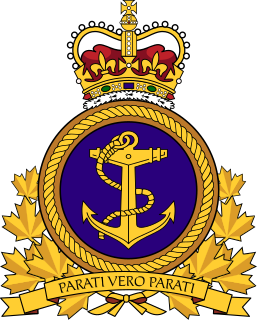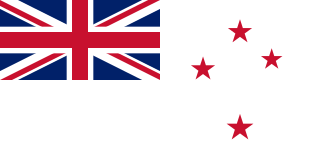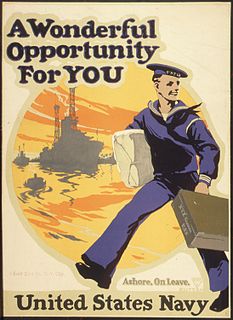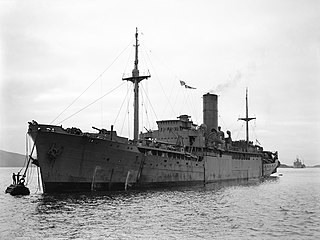The escort carrier or escort aircraft carrier, also called a "jeep carrier" or "baby flattop" in the United States Navy (USN) or "Woolworth Carrier" by the Royal Navy, was a small and slow type of aircraft carrier used by the Royal Navy, the United States Navy, the Imperial Japanese Navy and Imperial Japanese Army Air Force in World War II. They were typically half the length and a third the displacement of larger fleet carriers. While they were slower, carried fewer planes and were less well armed and armored, escort carriers were cheaper and could be built quickly, which was their principal advantage. Escort carriers could be completed in greater numbers as a stop-gap when fleet carriers were scarce. However, the lack of protection made escort carriers particularly vulnerable and several were sunk with great loss of life. The light carrier was a similar concept to escort carriers in most respects, but were capable of higher speeds to allow operation alongside fleet carriers.

The Royal Canadian Navy is the naval force of Canada. The RCN is one of three environmental commands within the unified Canadian Armed Forces. As of 2017, Canada's navy operates 12 frigates, 4 patrol submarines, 12 coastal defence vessels and 8 unarmed patrol/training vessels, as well as several auxiliary vessels. The Royal Canadian Navy consists of 8,500 Regular Force and 5,100 Primary Reserve sailors, supported by 5,300 civilians. Vice-Admiral Ron Lloyd is the current Commander of the Royal Canadian Navy and Chief of the Naval Staff.

Standing Royal Navy deployments is a list of operations and commitments undertaken by the United Kingdom's Royal Navy on a worldwide basis. The following list details these commitments and deployments sorted by region and in alphabetical order. Routine deployments made by the Navy's nuclear-powered submarines and their location of operations is classified.

Her Majesty's Naval Service, also known as the Senior Service, is the United Kingdom's naval warfare and maritime service. It consists of the Royal Navy, Royal Marines, Royal Fleet Auxiliary, Royal Naval Reserve, Royal Marines Reserve and Naval Careers Service. The term Naval Service should be distinguished from the "UK Naval Services", which consist of the Naval Service and the Merchant Navy. The Naval Service as a whole falls under the command of the Navy Board, which is headed by the First Sea Lord. This position is currently held by Admiral Sir Phillip Jones. The Defence Council delegates administration of the Naval Service to the Admiralty Board, chaired by the Secretary of State for Defence.

The history of the Royal New Zealand Navy leads back to early New Zealand-based gunboats used in controlling the British interests in the new colony, as well as to the strong linkages to the British Navy itself.

HMAS Bungaree was an auxiliary minelayer of Royal Australian Navy (RAN), serving during World War II. The ship was built as a cargo vessel for the Adelaide Steamship Company by Caledon Shipbuilding & Engineering Company at Dundee, and launched in 1937. The ship operated in Australian waters and was requisitioned by the RAN in October 1940. Decommissioned on 7 August 1946 and returned to her owners on 5 November 1947, she was sold in 1957 and renamed Dampier. She was then sold in 1960 and renamed Eastern Mariner and while operating in South Vietnamese waters she struck a mine on the Saigon River and was sunk on 26 May 1966. She was salvaged by a Japanese company and subsequently scrapped in 1968.

A depot ship is an auxiliary ship used as a mobile or fixed base for submarines, destroyers, minesweepers, fast attack craft, landing craft, or other small ships with similarly limited space for maintenance equipment and crew dining, berthing and relaxation. Depot ships may be identified as tenders in American English. Depot ships may be specifically designed for their purpose or be converted from another purpose.

The Northern Barrage was the name given to an extensive series of defensive minefields laid by the British during World War II in order to restrict German access to the Atlantic Ocean. The barrage stretched from the Orkney to the Faroe Islands and on toward Iceland. Mines were also laid in the Denmark Strait, north of Iceland.
George Adlam & Sons Ltd was an iron and brass foundry and engineering company in Fishponds, Bristol, England.

HMS Scott (J79) was a Halcyon-class minesweeper of the British Royal Navy completed as an unarmed survey ship with an enlarged bridge and a large chart room abaft the extended forecastle deck. She served through World War II and the two following decades.

SS Port Quebec was under construction for the Port Line when she was requisitioned by the Ministry of War Transport for completion as the auxiliary minelayer HMS Port Quebec. She joined the Royal Navy 1st Minelaying Squadron based at Kyle of Lochalsh laying mines for the World War II Northern Barrage. After minelaying was completed in October 1943, she was retained for conversion to a repair ship and renamed HMS Deer Sound (F99) in 1944. She was then returned to the Port Line in 1947.

HMAS Doomba was a Royal Australian Navy (RAN) warship of World War II. Built for the Royal Navy around the end of World War I as the Hunt-class minesweeper HMS Wexford, the ship only saw two years of service before she was decommissioned in 1921 and sold to the Doomba Shipping Company. The vessel was renamed SS Doomba, converted into a passenger ship, and operated in the waters around Brisbane until 1939, when she was requisitioned by the RAN for wartime service. Serving first as an auxiliary minehunter, then an auxiliary anti-submarine vessel, HMAS Doomba was purchased outright by the RAN in 1940, and served until early 1946, when she was sold and converted into a linseed oil lighter. Doomba was scuttled off Dee Why, New South Wales in 1976.
A repair ship is a naval auxiliary ship designed to provide maintenance support to warships. Repair ships provide similar services to destroyer, submarine and seaplane tenders or depot ships, but may offer a broader range of repair capability including equipment and personnel for repair of more significant machinery failures or battle damage.
MV Menestheus was a Blue Funnel Liner launched in 1929. She was requisitioned by the Royal Navy for conversion to the auxiliary minelayer HMS Menestheus. She joined the 1st Minelaying Squadron based at Kyle of Lochalsh laying mines for the World War II Northern Barrage. When minelaying was completed in October 1943, she was retained for conversion to an amenities ship as part of a mobile naval base for British Pacific Fleet warships. She underwent further conversion at Vancouver in 1944 including installation of a movie theater and canteen staffed by mercantile crews of the Royal Fleet Auxiliary service. Conversion included a brewery to make beer for shipboard consumption. The ship had been painted grey for service in the North Atlantic, but was repainted white for service in the western Pacific. Conversion was incomplete when hostilities with Japan ended, and she was returned to Blue Funnel Line in 1946.

MV Southern Prince was a cargo liner launched in 1929 for the Prince Line between New York City and Argentina. She was requisitioned by the Royal Navy for conversion to the auxiliary minelayer HMS Southern Prince. She joined the 1st Minelaying Squadron based at Kyle of Lochalsh laying mines for the World War II Northern Barrage. She was the largest of five ships requisitioned for this minelaying operation. She was torpedoed by German submarine U-652 shortly after midnight on 26 August 1941 while returning from laying minefield SN-70A; but was escorted to Belfast for repair. After minelaying was completed in October 1943, she became the flagship of Rear Admiral Rivett-Carnac for Operation Neptune; and anchored off Juno Beach on 8 June 1944. She was used as an accommodation ship from October 1944 until returned to the Prince Line in 1946.
SS Teviot Bank was a Bank Liner launched in 1938. She was requisitioned by the Royal Navy for conversion to the auxiliary minelayer HMS Teviot Bank. She was one of the first merchant ships converted for this purpose during World War II. She served in home waters until transferred to the Eastern Fleet in 1941. She then served briefly in the Mediterranean before being returned to the Bank Line in 1944.


















